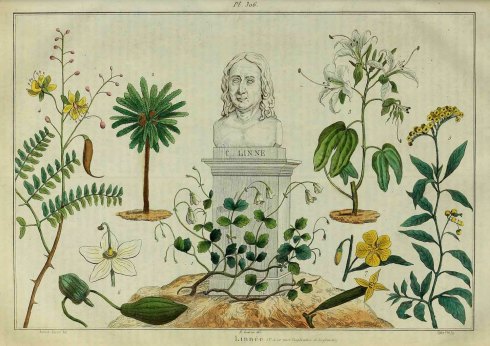Because of his entrepreneurial engravings, his silverwork, portraits of him and by him, his storied ride, and his boundless brand, Paul Revere as always been the most material of our Founding Fathers: he didn’t just act, he produced, and after his legendary life was over he continued to be a focus and force of production. As we head into (a rather early) Patriots Day weekend, I am thinking about Revere, mostly in reference to Grant Wood’s 1931 painting The Midnight Ride of Paul Revere, which supposedly aims to highlight the mythology overwhelming the event from the publication of Longfellow’s 1863 poem. The painting is so very accessible, however, that I fear that it simply reinforces Revere’s singular ride, or it has just become an aesthetic object: Wood himself transformed the image into a textile design (in which the rider gets lost in the landscape) for the Association of American Artists, and now you can even buy laminated placemats of it on Etsy! Revere the Midnight Rider was featured in a design by Anton Refregier in another “Pioneer Pathways” design, issued in several colorways by Riverdale Fabrics in 1952. A few decades earlier, Walter Mitschke also included Paul Revere’s ride in drawings for his “Early America” series of textile designs produced by R. Mallinson and Company.





Grant Wood, The Midnight Ride of Paul Revere, 1931, Metropolitan Museum of Art. Textile designs by Grant Wood and Anton Refregier for the Association of American Artists, produced by Riverdale Fabrics as part of the “Pioneer Pathways” series, 1952, Cooper Hewitt Museum; Walter Mitschke’s drawings for the Mallinson Company, 1927, Museum of Fine Arts, Boston.
Obviously Paul Revere’s Ride is larger than the man himself in terms of its myriad representations in text, image, and fabric, but I think the most effective displays are those that were created close to home: Robert Reid’s 1904 mural in the State House, the iconic statue of Cyrus Dallin, the Paul Revere pottery produced by the Saturday Evening Girls Club, all those calendars issued by another institution with a founding- father-affiliation, the John Hancock Life Insurance Company. For a more updated presentation of the route rather than the ride, there is an exhibition of drawings by artist and illustrator Fred Lynch on view now at the Scottish Rite Masonic Museum & Library in Lexington (which used to be called the National Heritage Museum) titled “Paul Revere’s Ride Revisited”.




Robert Reid mural in the Massachusetts State House, 1904, Caproni Brothers plaster bas-relief sculpture, Skinner Auctions, Tile by Paul Revere Pottery of the Saturday Evening Girls Club, 1917 (decorated by Sara Galner), Museum of Fine Arts, Boston; 1889 & 1903 calendars by the John Hancock Life Insurance Company, Historic New England.









 The arch of the Praça do Comércio, the Square of Commerce, is the proper entry to Lisbon, from the sea, but it’s a nineteenth-century construction after the rebuilding of the square following the earthquake of 1755. A great mural in the Museu Nacional de Arte Antiga shows the pre-1755 square. The Church of
The arch of the Praça do Comércio, the Square of Commerce, is the proper entry to Lisbon, from the sea, but it’s a nineteenth-century construction after the rebuilding of the square following the earthquake of 1755. A great mural in the Museu Nacional de Arte Antiga shows the pre-1755 square. The Church of 








 I’m trying to show the integration and proximity of new and old with these pictures, which include several streetscapes, views from the Castelo de S. Jorge, the Church of
I’m trying to show the integration and proximity of new and old with these pictures, which include several streetscapes, views from the Castelo de S. Jorge, the Church of





 Belem: site of the iconic Manueline
Belem: site of the iconic Manueline 






 Museums: so many! History museums and museums of every conceivable form of art: “ancient” (pre-1850), modern, decorative, TILES, marionettes. The famous Gulbenkian collection and several less well-known house museums: I was blown away by the
Museums: so many! History museums and museums of every conceivable form of art: “ancient” (pre-1850), modern, decorative, TILES, marionettes. The famous Gulbenkian collection and several less well-known house museums: I was blown away by the 







 ©Boston Athenaeum and Phillips Library, Timothy Ropes Papers (MSS 365).
©Boston Athenaeum and Phillips Library, Timothy Ropes Papers (MSS 365).









 “Red Man” with “All Power to the Soviets” banner, Mikhail Adamovich and Maria Kirillova, 1921; “Red Genius” with the slogan “We will Emblazon the World with the Third International”, Alisa Golenkina, 1920.
“Red Man” with “All Power to the Soviets” banner, Mikhail Adamovich and Maria Kirillova, 1921; “Red Genius” with the slogan “We will Emblazon the World with the Third International”, Alisa Golenkina, 1920.

 “The Star”, Mikhail Adamovich, 1921; “Large Star with Sheaf “, Nina Zander, Sergey Chekhonin and L.Vychegzhanin, 1921; “Who Does Not Work, Neither Will He Eat”, Maria Lebedeva, 1920.
“The Star”, Mikhail Adamovich, 1921; “Large Star with Sheaf “, Nina Zander, Sergey Chekhonin and L.Vychegzhanin, 1921; “Who Does Not Work, Neither Will He Eat”, Maria Lebedeva, 1920.












































